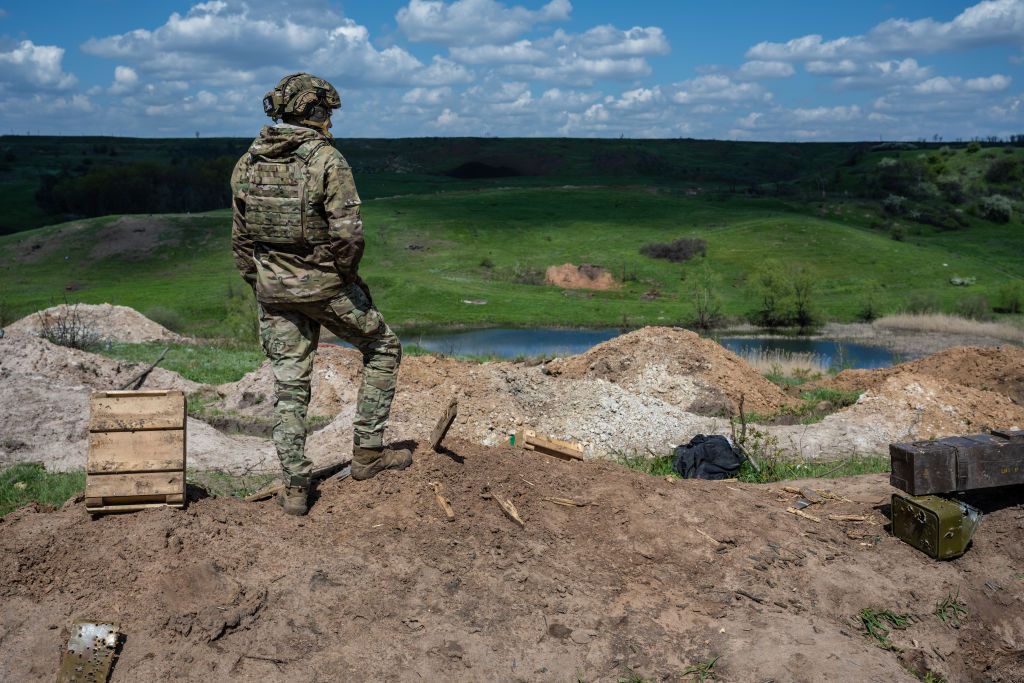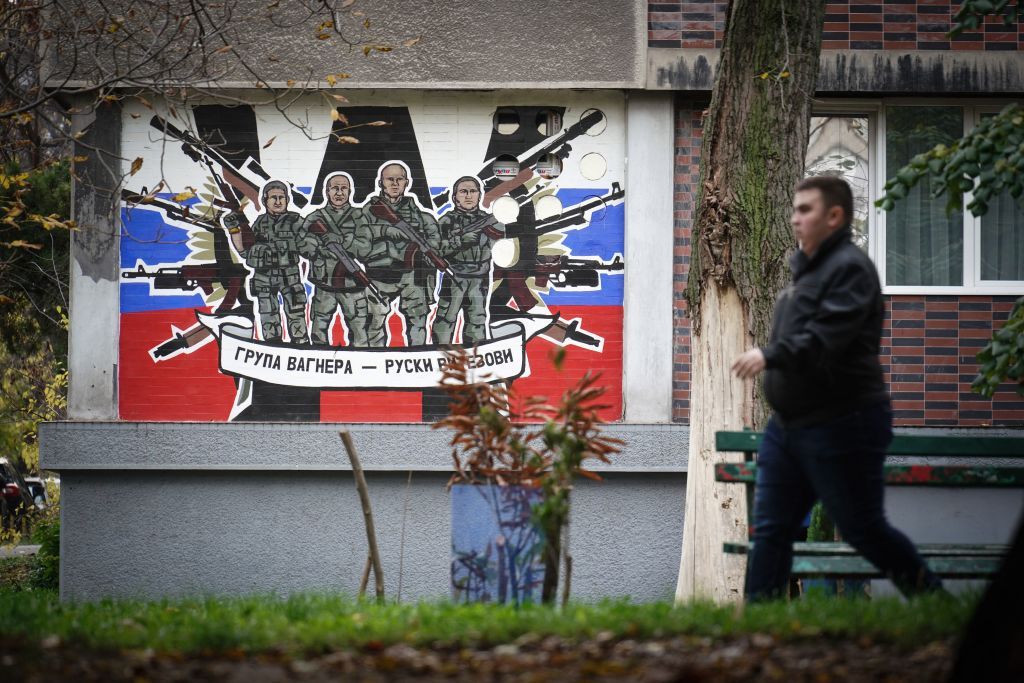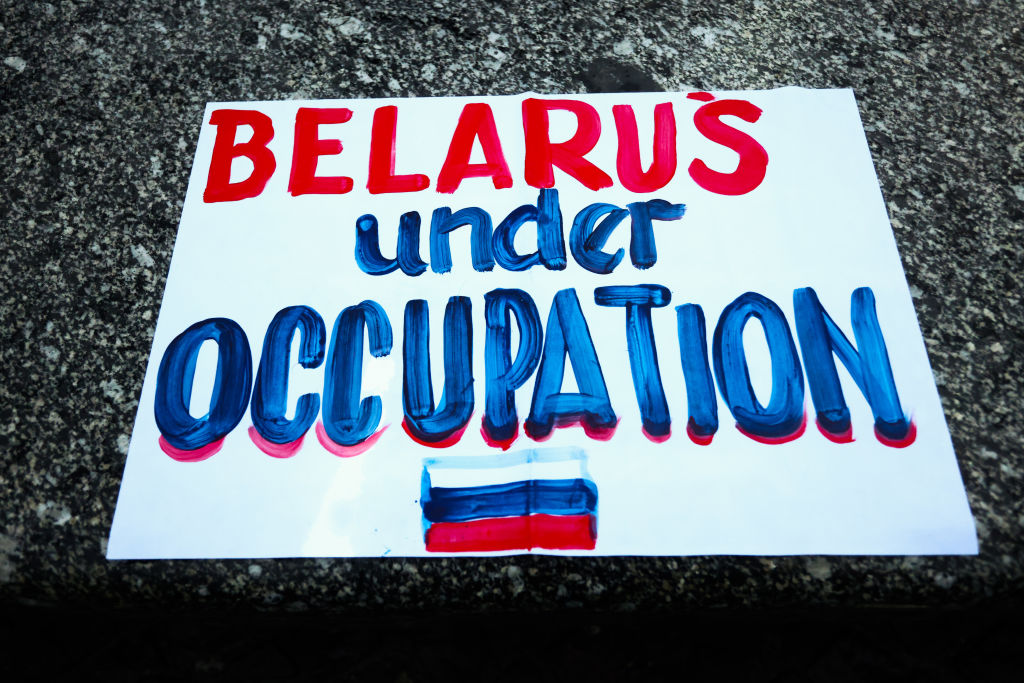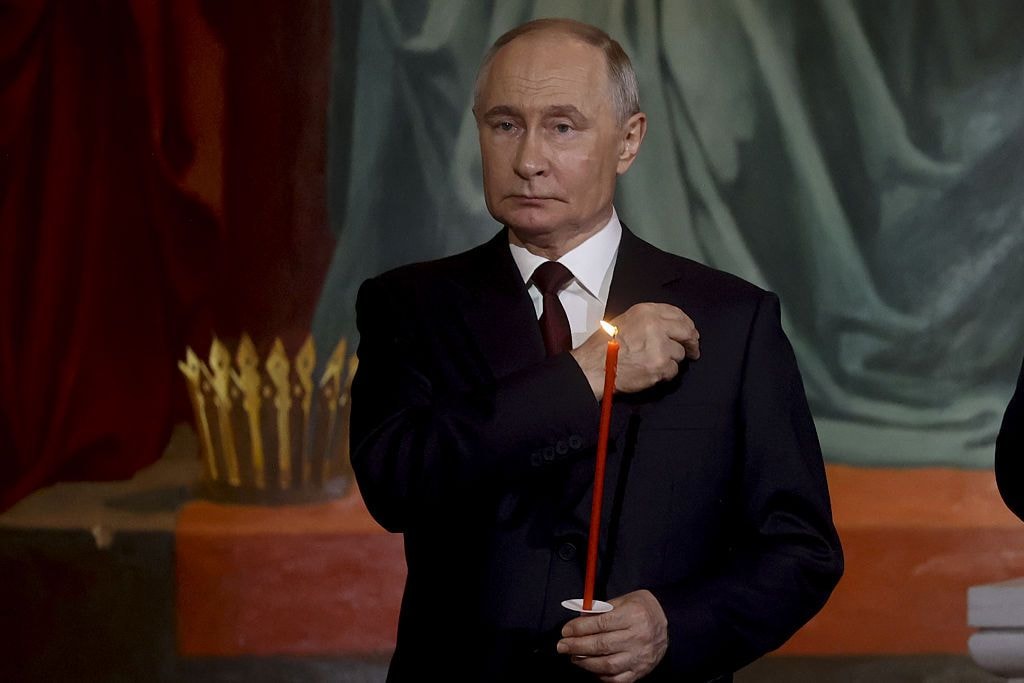Our readers' questions about the war, answered. Vol. 3

Editor's note: We asked the Kyiv Independent supporters to share their questions about the war. Here's what they asked and how we answered. Join our community to ask a question in the next round.
Question: Do you have any hints at what strategy might look like if the counteroffensive does not result in major gains for Ukraine?
Answer: My guess is that the Ukrainian command will be very careful about throwing in forces and supporting advances with fresh reserves. If things do not go the way they wanted, they should be able to perform an orderly retreat and keep the bulk of military forces prepared (and prevent Russia's fast counter-strike). – Illia Ponomarenko, defense reporter
What's behind "Z" as a symbol? Where did it come from?
Answer: The Z, V, and O symbols were painted on Russian military vehicles set to take part in the full-scale invasion of Ukraine. The overall consensus is that the letters referenced directions from where they would enter Ukraine to minimize friendly fire. As thousands of Russian military vehicles entered Ukraine, the Z became associated with the full-scale invasion, while the Russian pro-war public embraced it, turning it into a modern-day swastika. – Oleksiy Sorokin, senior editor
Question: What was targeted in the recent (May 12) major explosion in Khmelnytskyi? There seemed to be a single secondary explosion, so it didn't look like an ammunition depot, was it fuel?
Answer: All the geolocated footage points towards an old ammunition depot that had been in use since Soviet times. The profile of the explosion does indeed look a bit different from the videos of Russian ammunition depots hit by HIMARS etc., but there are no large fuel storage facilities in the satellite images of the facility, so that's unlikely. It was likely a large amount of ammunition, but it's impossible to know what kind. – Francis Farrell, reporter
Question: During the winter, Ukrainian troops landed on the Kinburn Spit. What happened after that? Is Ukraine in possession of all or part of the Kinburn Peninsula now?
Answer: Ukraine's operations across the Dnipro near Kherson have always been of a limited level and quite overhyped by the Ukrainian military and media, especially over winter. They were just small probing raids, partly looking at the feasibility of a potential crossing but mostly just keeping Russia on its toes and forcing Moscow to divert resources away from other fronts.
Any kind of permanent presence on the peninsula, which needs to be resupplied with equipment, fuel, ammunition, etc. is impossible at the moment. – Francis Farrell, reporter
Question: What can be done to cut off Prigozhin's sources of funding from, for example, exploiting natural resources in Africa? The mines seem to be operating full tilt.
Answer: There are several ways to cut off Yevgeny Prigozhin's income sources, especially in Africa. But it demands widespread legal actions from the West.
The Wagner Group operates in several African countries, giving local dictators muscle, participating in punitive operations against those who disagree with local regimes, and fighting against the armed opposition alongside the local autocrats.
In return, the Wagner Group gains access to resources, which further helps the group's boss, Prigozhin, to sponsor Russia's war against Ukraine. This state of affairs also helps Prigozhin stay afloat within the Russian system.
Ukraine has asked its allies and partners for more than just sanctions against the Wagner Group. It is the designation of it as a foreign terrorist organization. It is much stronger and stricter than sanctions in this context.
If the Wagner Group is widely designated as a terrorist organization, continuing its operations, especially financially, will be much more difficult.
The main effect of designating the Wagner Group as a terrorist organization would make it unlawful to cooperate with the group. It would also stigmatize and isolate the Wagner Group internationally, further deterring contributions to any economic transactions.
The U.K. is reportedly preparing to designate the Wagner Group as a terrorist organization. The EU and the U.S. are debating similar actions.
The French National Assembly recently unanimously designated the Wagner Group as a terrorist entity. The resolution is non-binding but increased the pressure on the EU to act. – Alexander Khrebet, reporter
Would Ukrainians see the death of Lukashenko as having a positive or negative effect for Ukraine during the war?
Answer: According to the October poll by Rating Group, 85% of Ukrainians have a negative attitude toward Belarus, so it's fair to say that many would see the death of Belarus dictator Alexander Lukashenko as a positive.
The official stance of the Ukrainian government is unknown.
On the one hand, Lukashenko's death can potentially help Belarusians break free from years of oppression and take their country back. On the other hand, Russia will most likely attempt to place another proxy into the vacant spot. – Oleksiy Sorokin, senior editor
Question: Is there a majority of people in Crimea who do not want to be a part of Russia?
Answer: It's hard to evaluate public sentiment in Crimea, both because of Ukraine's inability to access these territories and because Russia's annexation changed the peninsula's demographics. Many Ukrainians fled Crimea after Russia occupied it in 2014, while thousands of Russians were resettled there by the Kremlin, like the military. According to Tamila Tasheva, permanent representative of the president in Crimea, up to 800,000 Russians illegally moved to occupied Crimea since 2014.
Tasheva says that those Russians won't be expelled en masse once Crimea is liberated because such deportation is illegal. Hence, Ukrainian law enforcement will deal with those people on a case-by-case basis.
According to international law, Crimea remains a part of Ukraine regardless of post-occupation attitudes. In 1991, during a referendum on Ukraine's independence from the Soviet Union, over 50 percent of Crimea's population voted for Ukraine to be independent from the USSR. – Anastasiia Lapatina, reporter
Question: What percentage (roughly) of Ukraine's ammunition and military hardware needs can be produced within Ukraine?
Answer: From what we know, Ukraine's defense industry is now mostly concentrated on repairs – vehicles, equipment, and so on. There's roughly 15-20% being produced inside Ukraine (not heavy munitions). When it comes to shells, rounds – it's mostly ready-to-go supplies and a small portion of things produced at newly-established lines in Poland and the Czech Republic. By the way, many Ukrainian defense enterprises had a problem with lots and lots of excessive assets, old Soviet production facilities, territorial properties, and so on. Now, in wartime, it's their blessing because their old Soviet plants are insanely huge, and Russia finds it hard to find specific working facilities and target them. – Illia Ponomarenko, defense reporter
How systemic is the corruption of the legal system in Ukraine?
Answer: The judiciary is the least reformed institution in the country. And it's fighting back any attempt to be fixed. The case of Vsevolod Kniaziev, the former head of the Supreme Court, who is on trial for allegedly taking a $2.7 million bribe, is a great example of how bad things are in the judiciary.
The Supreme Court was considered one of the better ones before this scandal.
The Constitutional Court and the recently defunct Kyiv District Administrative Court are long considered the epitome of corruption.
However, Ukraine's civil society and the West are the ones pushing Ukraine's judicial reform forward. And there's a chance.
On June 1, the judiciary's highest governing body appointed 16 members of the High Qualification Commission, tasked with vetting and nominating candidates for judicial jobs.
The overall consensus is that those chosen don't have a history of mismanagement, corruption, or other malicious activity. – Oleksiy Sorokin, senior editor
Question: Can Vsevolod Knyazev be charged with war profiteering and or treason?
Answer: Knyazev has been charged with receiving a $2.7 million bribe in exchange for a court ruling favorable to businessman Kostyantyn Zhevago. No information indicates that Knyazev has been involved in war profiteering, which implies profiting from warfare or the sale of weapons. Additionally, there is no information suggesting that Knyazev has committed treason. – Oleg Sukhov, reporter
Question: What is the status of the IDPs in Ukraine? Have they found permanent housing and job's yet? What is the government's plan of action for those that have been displaced?
The amount of internally displaced persons constantly fluctuates due to Russian attacks, as well as some IDPs returning home. Ukraine's Minister of Reintegration of Temporarily Occupied Territories, Iryna Vereschiuk, said in March 2023 that at least 5 million Ukrainians were registered as IDPs, while up to 7 million people were internally displaced but not registered as such.
By registering as IDPs, adults can get 2,000 hryvnias – around $55 – per month as government aid. Children and people with disabilities get 3,000 hryvnias, or roughly $80. There are also many volunteer organizations, both international and domestic, operating around the country to help IDPs with food, clothing, and other necessities.
It is sometimes difficult for IDPs to find jobs because employers don't want to hire someone who may leave and go back home in a matter of months. The government helps mitigate those risks by paying companies around $185 per month, for two months, for each IDP a company hires.
In April, the government adopted an IDP-focused strategy, which identified key priorities, among which are the safe evacuation of people from dangerous zones, their integration into new communities, and support for their safe return home, when possible. – Anastasiia Lapatina, reporter
Question: I saw some efforts to start producing drones in Ukraine, which at least should drop more grenades into the enemy or serve as (probably expensive) loitering munitions. How are those efforts going?
Answer: Unfortunately, that's a long process that also goes hand in hand with a lot of bureaucracy and lack of proper funding. Yes, we do have certain interesting designs, but again, it's still far away from making it to the front line. So, we keep using older types and binge-buying lots and lots of Chinese commercial drones adapted to carry hand grenades or VOG rounds. – Illia Ponomarenko, defense reporter
Question: Do you agree with the view that Russia is exhausted in terms of offensive potential but still has powerful defense?
Answer: Yes, on the whole, he is most likely right in the context of the spring/summer campaign, but as we know, war ebbs and flows, and the state of exhaustion is not forever, as Russia is also always slowly mobilizing and recruiting more men, bringing more equipment out of storage, etc. Russia could mount more major offensives later this year, especially if they successfully withstand the upcoming Ukrainian counteroffensive. However, it is worth mentioning that these will come with diminishing returns: the quality of Russian forces available continues to drop as they rely more and more on mobilized soldiers and older equipment.
As for the powerful defense, defending fortified lines of trenches is always a lot easier than attacking them, and Russia has had plenty of time to fortify, whether or not those lines are manned by quality forces. – Francis Farrell, reporter
Question: How big of a concern is it for Ukrainians that some who have sought refuge in other countries during the war won't return once it's over?
Answer: According to the UN, roughly 8 million Ukrainians have fled the country to Europe, escaping Russia's war against Ukraine. These Ukrainian refugees not coming back once the war is over has never been a serious concern. The UN reported that the absolute majority of them – 77 percent – want to come home. . A report done by the International Organization for Migration back in September 2022 said that around 1,268,000 Ukrainian refugees already returned home. Some came back even to areas still facing Russian attacks, like Kharkiv Oblast, despite the Ukrainian government's caution against it. – Anastasiia Lapatina, reporter
Question: When donating to the Ukrainian war effort, is there a difference in impact between giving to United 24 versus giving to private efforts to procure supplies for the Armed Forces? (For example, a Ukrainian band that raises funds to buy drones for a Territorial Defense unit.)
Answer: It's nothing but my opinion, but from what I'm seeing, non-government charities like Come Back Alive seem to be more effective. This, however, doesn't mean United 24 is really bad – in general, most of the large Ukrainian organizations helping the military are good, and it's pretty safe to donate. – Illia Ponomarenko, defense reporter
Given the recent speculation on Lukashenko's health, I'd like to know your thoughts on whether the people of Belarus might try restarting their protest and opposition movements again?
Answer: Unfortunately, I don't see any signs that any tangible protest can take place in Belarus soon. The 2020 Belarus nationwide protest was building on years of dissatisfaction with the regime, followed by a weak response to the COVID pandemic, and were later ignited by the mass falsifications during the presidential elections. Then they were crushed, and all leaders and active members of the protest were either imprisoned or forced into exile. Now, with Belarus moving from authoritarian to totalitarian rule, a major spark is needed to force the oppressed people to try again. And to be honest, I don't see it. – Oleksiy Sorokin, senior editor
Question: Are Russian offensives in Kharkiv Oblast intensifying? If so, then are they just local/tactical, are they part of trying to lock down Ukrainian troops ahead of the Ukrainian counteroffensive, or are there any indications of a larger Russian counteroffensive in Kharkiv Oblast?
Answer: With the current static state of the front line, the small advances that we see on both sides are indeed localized attacks, probing for weaknesses and looking for opportunities to make small tactical advances.
We know that Russia has shifted to a general defensive posture across the front line, and isn't currently conducting any larger-scale offensives that could threaten to make major breakthroughs through Ukraine's own defensive lines.
The brigades and equipment being prepared by Ukraine for the counteroffensive are fresh and being kept in reserve, and it's very unlikely that they will be sent somewhere else unless the situation is really critical. That being said, a contact of mine near Kupiansk did report some quite heavy fighting recently. – Francis Farrell, reporter

















